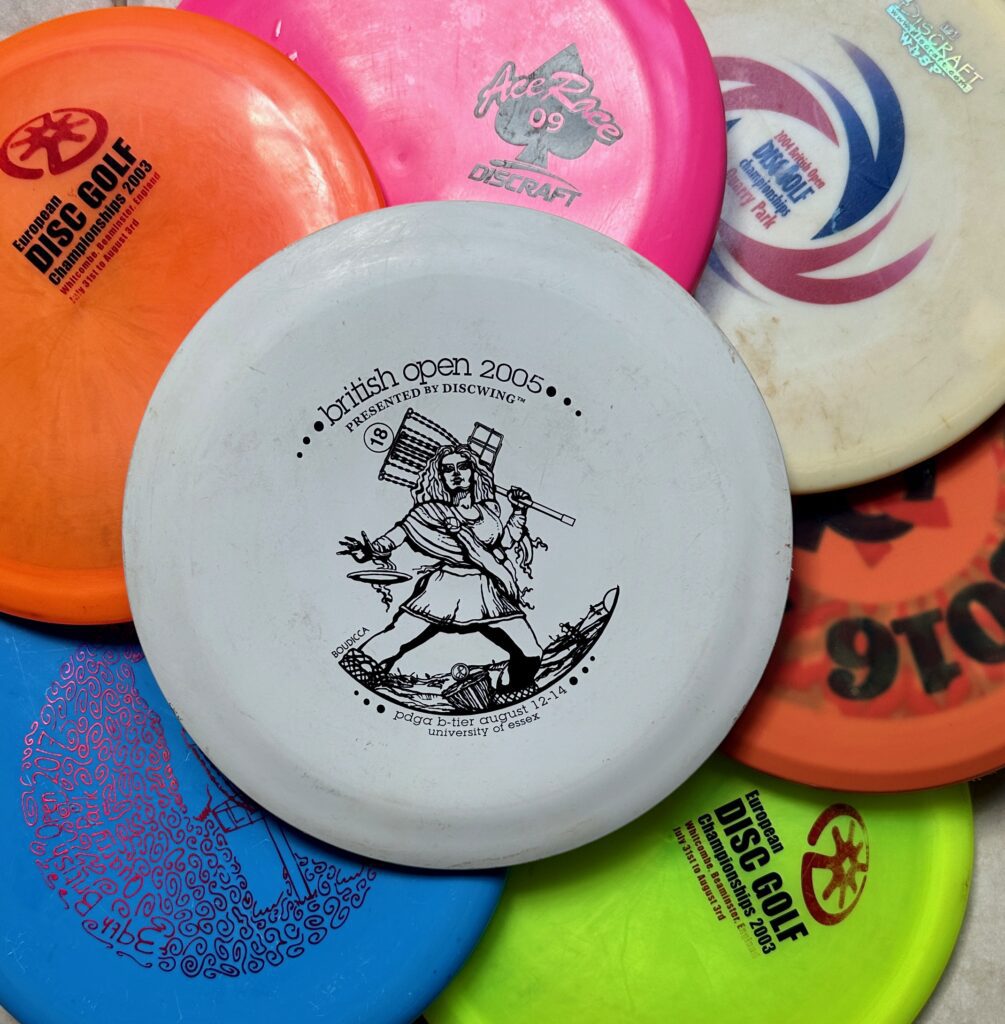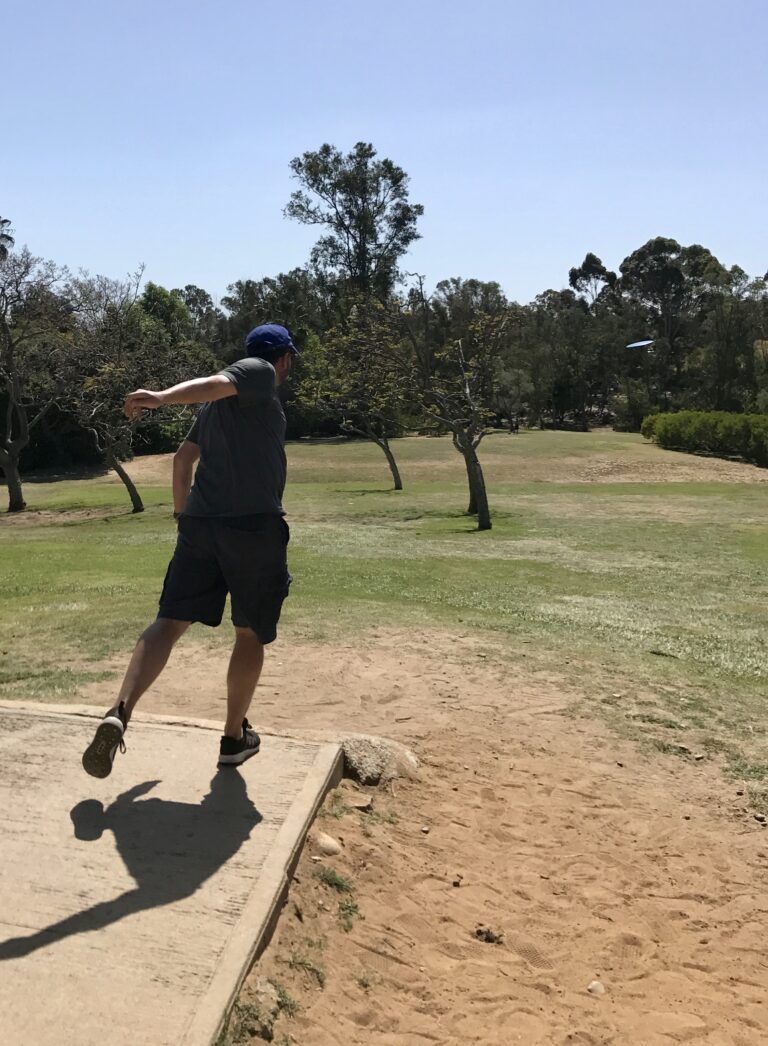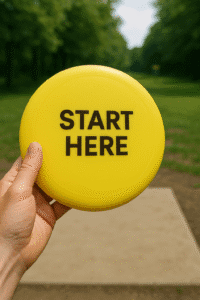Disc golf drivers promise rocket-like distance and laser control, yet the shelves look like a physics exam. If you have ever bought the fastest disc and watched it veer off like a shopping trolley with one bad wheel, you know the feeling. This disc golf driver guide shows you how to choose a disc golf driver that fits your arm speed, shot shapes, and courses, so your throws fly on purpose, not by accident.
How to Choose a Disc Golf Driver
Match Your Power to the Speed Rating
Speed ratings run roughly from 3 to 14. Higher numbers need more arm speed to fly as designed. If the disc is too fast for you, it acts overstable and dumps early. If it is in your range, it rides forward before a clean fade. A simple cue, pick a speed that feels smooth at full reach-back without forcing your throw.
- Beginners, try slower options first, fairway driver speeds 6 to 9.
- Intermediate arms can step into 9 to 11 for extra carry.
- Leave 12 to 14 for when your form and timing are consistent.
Understable options help more players than you think. An understable disc golf driver will turn a touch, glide, then settle. That little turn is free distance for developing arms and a tidy way to shape a tunnel flight.
Disc Golf Driver Stability Explained
Think of disc golf driver stability as the disc’s tendency to turn or fight turn. Stability rating shows up in the flight numbers through turn and fade.
- Overstable discs: Trusty into headwinds, they finish hard and resist turning.
- Understable discs: Easier to shape, they turn gently and ride glide.
- Neutral discs: Straight flyers that teach clean release angles.
Use the flight numbers as a quick guide, speed rating for power need, glide rating for lift, turn rating for high-speed movement, fade rating for the finish.
Choosing the Right Disc Weight
Disc golf driver weight affects control and wind performance. Lighter drivers, roughly 150 to 160 grams, need less effort and can add carry. Heavier options, 165 to 175 grams, track better in gusts and handle full power. Many pros favour 167 to 172 grams as a sweet spot for distance and control.
Best Disc Golf Driver for Beginners
- Pick a fairway driver at speed 6 to 9 for form-building accuracy.
- Choose an understable disc golf driver to help achieve effortless turn and glide.
- Start with 150 to 160 grams until your mechanics settle.
Choose a Disc Golf Driver for Course and Wind
- Tailwind shots: Neutral stability, high glide. Let the breeze carry it.
- Headwind shots: Overstable disc golf driver, firmer release, lower line.
- Tight fairways: Understable or neutral for shapeable lines and fairway control.
Advanced Flight Tips with Drivers
- Turn and fade in practice: Turn is the high-speed move, fade is the reliable finish. Learn both to steer the whole flight.
- Hyzer angle and anhyzer throw: Set your hyzer angle to make a driver flip to flat, or add a gentle anhyzer throw for right-moving lines. Pair the angle with the disc’s stability to script the shot.
- Tunnel flight: Understable at slight hyzer, smooth release, nose down. Glide does the work.
Perfect Your Disc Golf Driver Throw
- Grip for control: Four fingers on the rim, thumb firm on the plate. Relaxed forearm, no white knuckles.
- Throwing mechanics: Balanced x-step, hips lead, full extension, late wrist snap. Smooth beats hard.
- Accuracy basics: Pick a small aim point, keep a repeatable release, practise hyzer, flat, and anhyzer.
Plastics That Suit Your Conditions
- Baseline plastics: Grippy and affordable, beat in faster.
- Premium plastics: Durable with stable flight for longer, often better in wet conditions.
Weather matters. Cold can stiffen baseline plastic, so pick premium when temperatures drop. Rain reduces grip, so choose premium textures that stay tacky.
Breaking in Your New Driver
Fresh drivers often start more overstable. Regular field work makes them mellow, then neutral, then understable. Power throws and light anhyzer reps speed up the process. Rotate a pair so you have consistent stages of wear.
Brands and Smart Research
Big makers like Innova, Discraft, and the Trilogy group offer wide lines across stability ranges. Try moulds with similar numbers across brands, then let feel and release confidence decide. Read community reviews, and test in calm and breezy wind conditions before committing.

Common Mistakes with Drivers
- Chasing pure distance: Control trims strokes faster than raw power.
- Ignoring stability: Pick stability for your arm speed and the shot in front of you.
- Picking the wrong weight: Too light in wind floats away, too heavy can stall your form.
- Overspeeding your bag: A 12-speed thrown like a 9-speed flies worse than a true 9-speed.
- Buying by colour: Feel and numbers first, looks second.
Disc Golf Driver Selection Strategies
- Build for roles: One neutral distance driver for max carry, one overstable for wind, one understable for shaping.
- Field test: Throw back-to-back on a measured line. Compare height, carry, and finish, not just one long pull.
- Arm speed awareness: As your timing improves, revisit your disc golf driver speed rating and stability picks.

FAQs About Disc Golf Drivers
Most recreational players see 70–110 metres with a fairway driver. Strong form and timing can push distance drivers 120 metres or more. Height control and clean spin matter as much as power.
Lighter flies easier but is twitchy in wind. Heavier holds lines and handles gusts. Many players settle around 167–172 g for balance.
Tailwind likes neutral stability with good glide. Headwind needs an overstable driver that resists turning.
Start with speed 6–9. These fairway options reward clean form and keep misses smaller.
Speed is power need, glide is lift, turn is high-speed movement, fade is the finish. Read them together to predict flight.
Pick a fairway speed with neutral stability and a weight you can release cleanly. Test in calm and breezy rounds to confirm.
Final thoughts
Pick the right tool, then let repetition do the heavy lifting. By using the steps above on how to choose a disc golf driver, you will build a bag that adds easy metres and keeps you in bounds. Practise purposefully, note what flies well in wind, and keep one eye on feel. Smart choices today mean cleaner releases and louder chains tomorrow.








